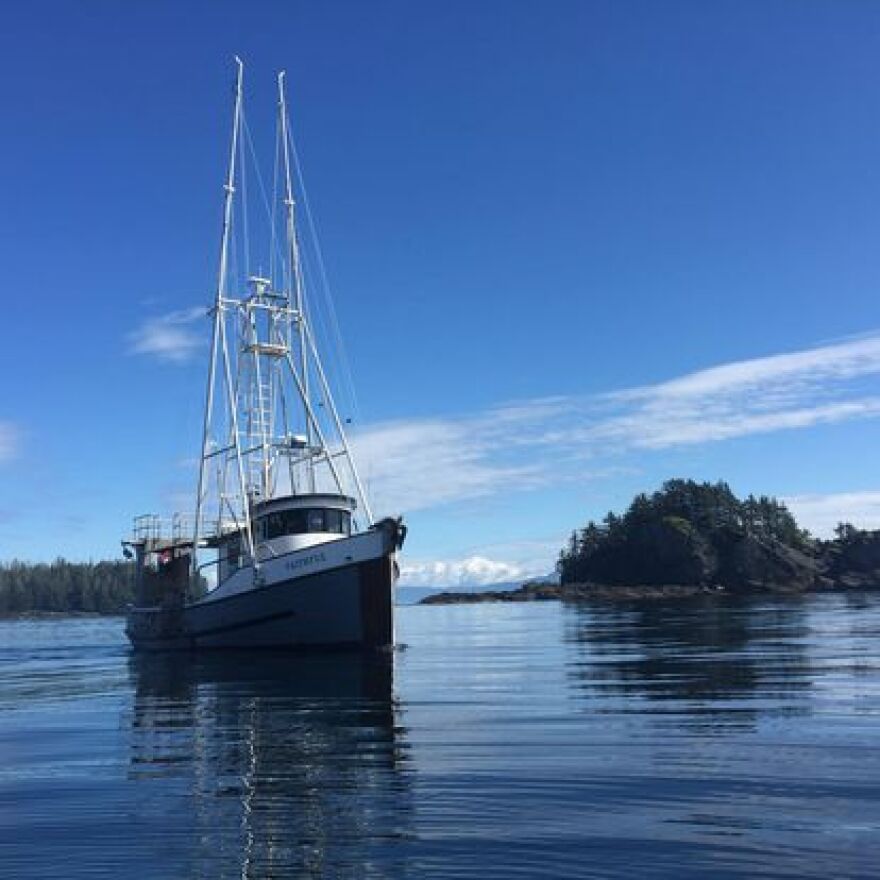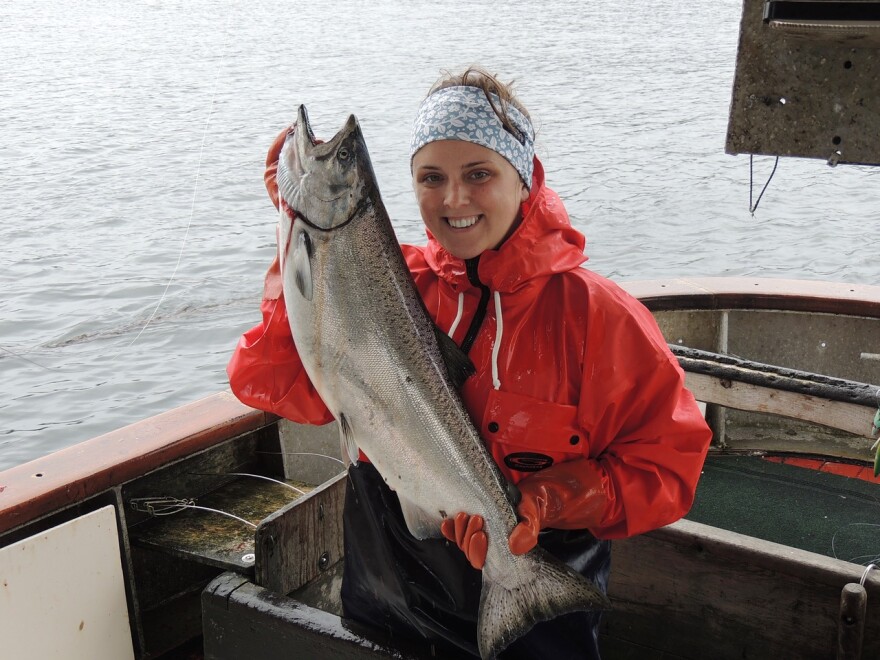Tracy Sylvester wants to change the way we think about frozen fish.
“A lot of frozen fish on the market, it tastes bad," she said.
“It was frozen because there was a surplus or because it was starting to go bad so they’re like, ‘well we gotta freeze it,’ you know."
"But in our case we’re bringing it in with the intention of freezing it right away. And as a commercial salmon fisherman more than 90 percent of the fish that I eat is frozen.”
Tracy lives in Woods Hole. But she spends her summers in Sitka, Alaska, fishing hook and line for King Coho Salmon with her husband and their two young kids. In the off-season, she sells their catch and fish from other Sitka boats at a shop in Falmouth.

“It is tricky to get something from Alaska down here. So by flash freezing it and vacuum sealing it, we're able to preserve it, basically stop the fish in time,” Tracy said.
Flash freezing is different from just sticking something in the freezer. When we put something in a normal home freezer, the temperature is just cold enough to freeze the food, but not cold enough to do it quickly.
“There will be like freezing and thawing that goes on because it's not a stabilized super cold environment. So that'll rupture cell walls and cause loss of texture, a fishy taste, all those problems,” Tracy said.
“But when you flash freeze it, you freeze it super cold and super fast.”
Flash freezing means a fish can go from the water to the boat to being fully frozen in a matter of hours. Once it’s flash-frozen, it keeps fine in a regular home freezer. In fact, most people have a hard time telling the difference between fresh and flash frozen fillets. And Tracy says it’s attractive to fishermen because it helps prevent both wasted fish and wasted effort:
“We’re handling each fish very carefully, so we use a gaffe, we bonk the fish, land it, we rip a gill, and bleed the fish, and then you gut and clean the fish right after it was landed basically, after it’s bled out. And so it’s really important to us that none of that fish gets wasted. Because we worked so hard to make it nice quality, and it’s a very large percentage of fish that goes to fresh market that ends up getting wasted somewhere in the supply chain.”

A 2015 study by researchers at Johns Hopkins estimated that of the 4.7 billion pounds of seafood caught or imported in the U.S. every year, almost half—2.3 billion pounds are wasted. Some of this happens during distribution and at sea, but most of it happens at home, when we buy fish but don’t end up eating it.
“And I love picking up some fresh fish at the market myself but then it’s like you really want to eat that pretty quickly because you don’t know really how long it’s been, unless you get it from the fisherman or a source close to the fisherman, so that’s another reason frozen is great because it reduces waste in the supply chain.”
Tracey says she cooks frozen salmon after she thaws it just like she does fresh salmon. She likes to marinate and grill it.
“So we usually do a marinade. It's like equal parts olive oil can be any kind of oil that you like, but olive oil, balsamic vinegar, and we like to use liquid aminos, or you can use soy sauce, and then you can add a little bit of miso paste. We add something sweet, like I like to use Vermont Maple syrup or local honey. And that's kind of the base of it.”
She explained how you can add ginger and some chopped garlic. And usually, they marinate it for just a few hours and then grill it.
So why would you cook it any other way? But if there’s no time for the grill, sometimes Tracy cooks the salmon frozen.
“When you cook it from frozen, there’s a million ways to do that, but the main thing is that you cook it hotter and faster. So I’ll throw it in the baking pan and cook it at like 420 for like 15 minutes and then check it, and that’s a good one for when I’m just starving and it beats going for like the chicken nuggets or something.”
—
Here are Tracy's recipes for marinated salmon and for cooking frozen salmon:
Alaska Black Cod (or Wild Salmon) Marinade:
Equal Parts: Olive Oil, Balsamic Vinegar, Liquid Aminos (soy sauce works in a pinch, I just use a little less to avoid overpowering the other flavors)
Add to taste: chopped garlic, Vermont maple syrup (or local honey), and miso paste (Miso is optional in this marinade. It helps to thin it with a little olive oil before throwing in the marinade.)
I marinade it for at least an hour, ideally I make the marinade early in the day. You can thaw the fish ahead of time or let it thaw in the marinade.
This recipe is best on the grill, black cod can take LOTS of heat and will not dry out like other fish. It is also great on wild king and coho salmon. I like to marinate my fish and veggies in the same mix, and throw them all on the grill together. I use a tinfoil or a tray when I grill fish. You don't have to flip it, but I sometimes cook it skin side up for a minute or two to give it a quick sear before finishing it skin side down. Serve over rice and/or salad greens or add it to your miso soup! (I make Crissy's Immunity-Boosting Miso soup with this fish all the time, so good!) I always keep wasabi handy, I love seasoning this dish with it.
Tracy Sylvester’s instructions for cooking fish from frozen:
I always cook from frozen in the oven — I use olive or coconut oil to grease the pan, give the fish a quick cold water rinse, then bake at 400 for 18-20 mins. I start checking it around 15 mins, it’s done when you can gently press a fork through the thickest part. Our fish is flash-frozen — so it is sashimi grade and you can eat it raw. I like cooking salmon and halibut from frozen because it helps keep the center more rare and moist. They are easy to dry out by accidentally overcooking, so I check them often and pull them as soon as they’re done, because they continue to cook in the hot pan for a few mins.
—
This piece first aired in October 2021.








